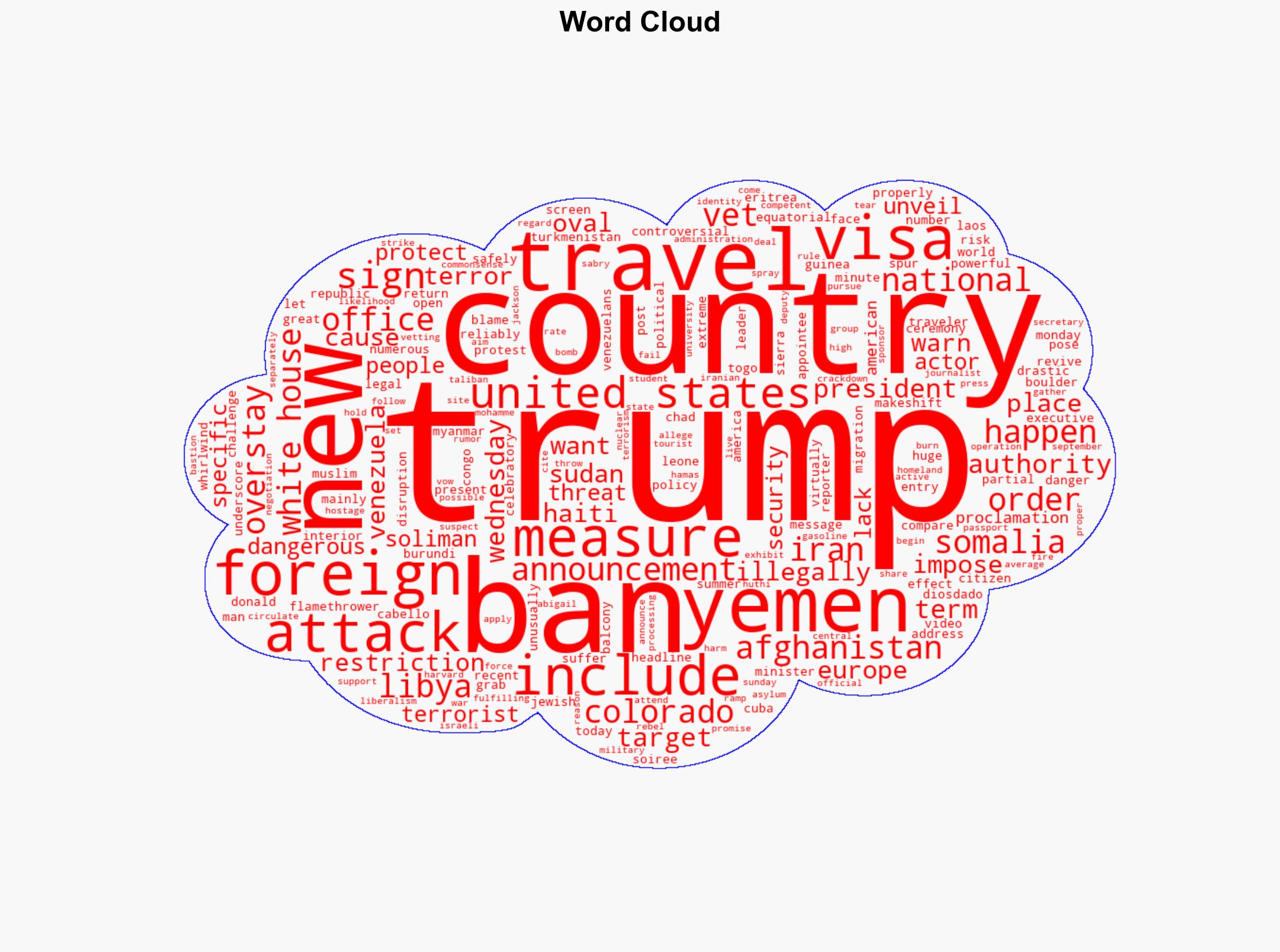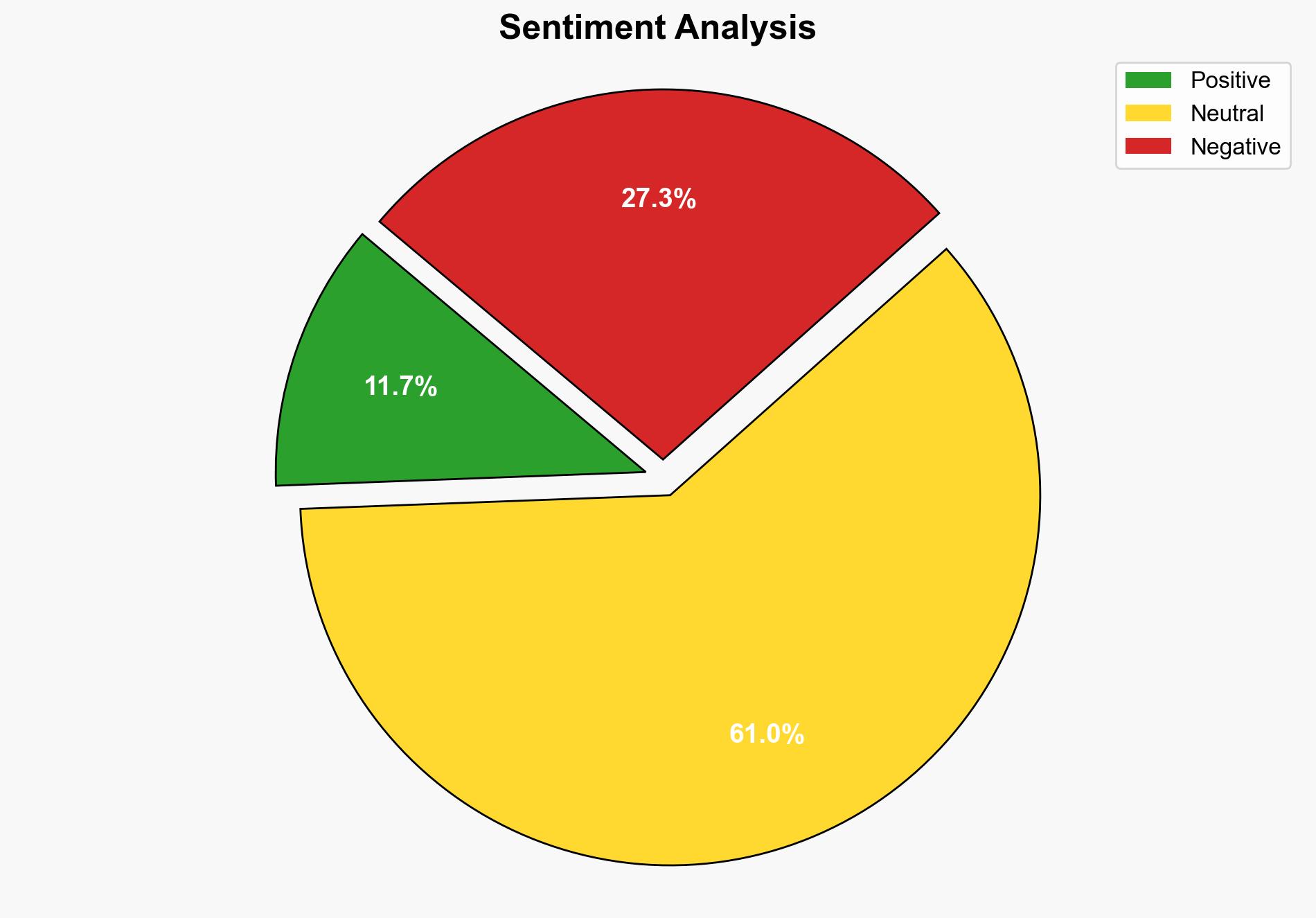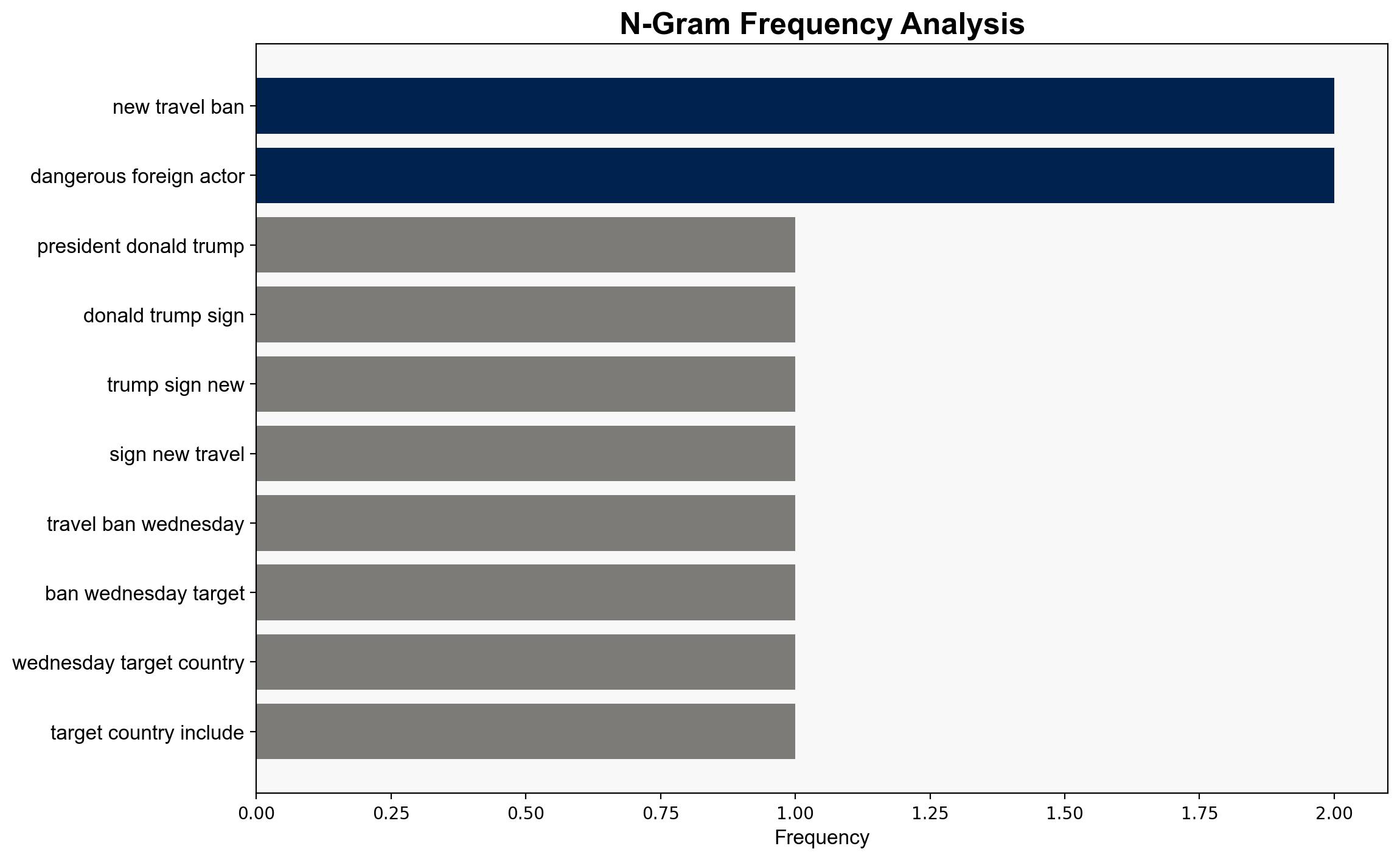Trump slaps new travel ban on 12 countries – Digital Journal
Published on: 2025-06-05
Intelligence Report: Trump slaps new travel ban on 12 countries – Digital Journal
1. BLUF (Bottom Line Up Front)
The newly imposed travel ban by Donald Trump targets 12 countries, including Afghanistan, Iran, and Yemen, citing national security concerns. This measure aims to prevent potential terrorist threats by restricting entry from nations perceived as high-risk due to inadequate vetting processes. The ban is expected to face legal challenges and could lead to significant diplomatic tensions and domestic unrest.
2. Detailed Analysis
The following structured analytic techniques have been applied to ensure methodological consistency:
Causal Layered Analysis (CLA)
At the surface level, the travel ban is a response to recent security incidents, such as the attack in Colorado. Systemically, it reflects ongoing concerns about immigration and national security. The worldview underpinning this action is one of heightened vigilance against perceived external threats. The mythos driving this policy is a narrative of protecting national integrity against foreign adversaries.
Cross-Impact Simulation
The travel ban could strain relations with affected countries, potentially impacting diplomatic and economic ties. Neighboring states may experience increased pressure as they become alternative routes for travelers. Economic dependencies, particularly in trade and remittances, could be disrupted, affecting both the U.S. and the banned countries.
Scenario Generation
– Best Case: The ban effectively prevents potential threats without significant diplomatic fallout, and legal challenges are resolved swiftly.
– Worst Case: The ban exacerbates tensions with affected countries, leading to retaliatory measures and increased anti-U.S. sentiment.
– Most Likely: The ban faces legal hurdles and diplomatic protests, with moderate impact on U.S. foreign relations and domestic politics.
3. Implications and Strategic Risks
The travel ban may lead to increased anti-U.S. sentiment and potential retaliatory actions from affected countries. It could also strain U.S. relations with allies who view the ban as discriminatory. Domestically, the ban may fuel political polarization and civil unrest. The potential for cyber threats from affected nations or sympathizers may increase as a form of asymmetric retaliation.
4. Recommendations and Outlook
- Engage in diplomatic dialogue with affected countries to mitigate tensions and explore cooperative security measures.
- Enhance domestic security protocols to address potential retaliatory threats, including cyber threats.
- Monitor legal proceedings closely to anticipate potential changes or reversals in policy.
- Scenario Projections:
- Best Case: Strengthen international cooperation on security issues.
- Worst Case: Prepare contingency plans for potential economic and diplomatic fallout.
- Most Likely: Maintain a balanced approach to security and diplomatic engagement.
5. Key Individuals and Entities
Donald Trump, Diosdado Cabello, Mohamme Sabry Soliman
6. Thematic Tags
national security threats, cybersecurity, counter-terrorism, regional focus




